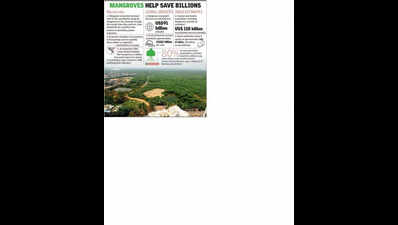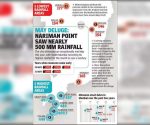‘Rural communities show most awareness of climate change’ | Mumbai News – The Times of India

Mumbai: The MMR is home to some 22,300 hectares of mangrove, while Mumbai hosts about 6,522 hectares, according to some estimates.
According to IIT Bombay researchers who interviewed households across rural, semi-urban and urban settings in the Mumbai Metropolitan Region (MMR) and conducted discussions with officials and community leaders, many people understood the importance of mangrove conservation and when educated about their benefits, were willing to pay to conserve them.
Over half the 150 households the researchers spoke to were aware of the protective role of mangroves against climate change as well as other benefits. This awareness was highest in rural areas where 83% of interviewees showed knowledge of climate change.
Many were willing to put their money where their mouth is. About 80% of rural and urban respondents said they would pay some money every month toward conserving mangroves. That willingness was lowest among the semi-urban residents in Uran (58%). However, the actual amount these semi-urban residents were willing to pay was the highest of the three sites—an average of Rs 214 a month.
One reason these semi-urban residents might have been willing to pay more, researcher Naman Gupta suggests, based on her interviews, is an increase in wealth in recent years due in part to compensations received for acquisition of land for infrastructure projects. They had the highest mean income among the three groups. Also, many residents in Uran saw how mangroves shielded their lands from recent cyclones like Nisarga and Tauktae, she notes.
Rural residents were willing to pay the second highest amount per month — Rs154 — despite averaging the lowest incomes, the survey found, perhaps reflecting the greater impact of weather on rural livelihoods. “Rural communities working in fisheries and farming are able to make the connection between climatic changes and their own lives,” says Gupta.
By contrast, urban residents were willing to pay the least amount, the survey found. Residents in Navi Mumbai were aware of the importance of mangroves, but felt the government should be doing the job of conservation. “Many of them said the govt has the resources and we shouldn’t have to contribute,” said Gupta. Some also expressed lack of trust in govt initiatives.
However, urban residents were willing to volunteer more time to the cause of conservation—an average of ten hours a month compared with five hours offered by rural respondents and less than an hour by semi-urban residents.
These differing responses show there can be no single strategy for conservation, Gupta says.
To calculate the value of mangroves, the researchers used the mean sum that families were willing to pay–Rs 169 per month–and multiplied it by the estimated households in the region. This ‘Willingness to Pay’ method is widely used in economic valuations of ecosystem services, said Saudamini Das, a professor at the Institute of Economic Growth, adding, “It helps make their value explicit and public.”
Mangroves are a prime candidate for such economic valuations because their benefits are enormous, says Das. One of her recent studies found mangroves contributed 15% of the revenue of the fishing sector in Gujarat.
Gupta, a PhD scholar at IIT Bombay’s Centre for Climate Studies, hopes her study will be a reference for policymakers or spur a more detailed assessment. Her survey used a relatively small sample. Such valuations, she says, would not only improve decisions on infrastructure projects but also allow governments to tap green finance to pay for conservation.
















